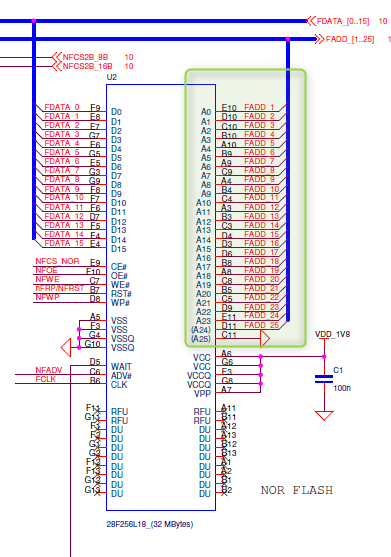Hi
In one of design uses OMAP1621 with NOR FLASH Interface .
With CS3 as chip select ,we use 8M x 16bit parallel flash
The NOR FLash Addressing is FLASH.ADDRESS[25:1] .The interface used is 16 bit data .
Is l Flash Address A1 a least significant bit or shall have A0 assigned from OMAP processor .?


